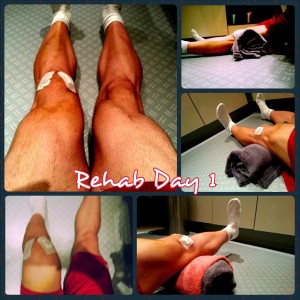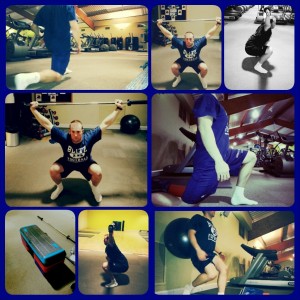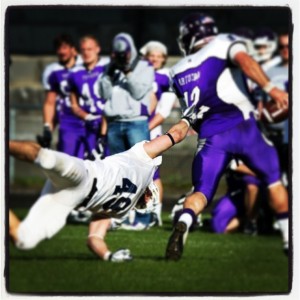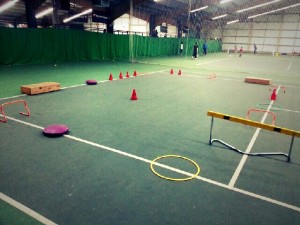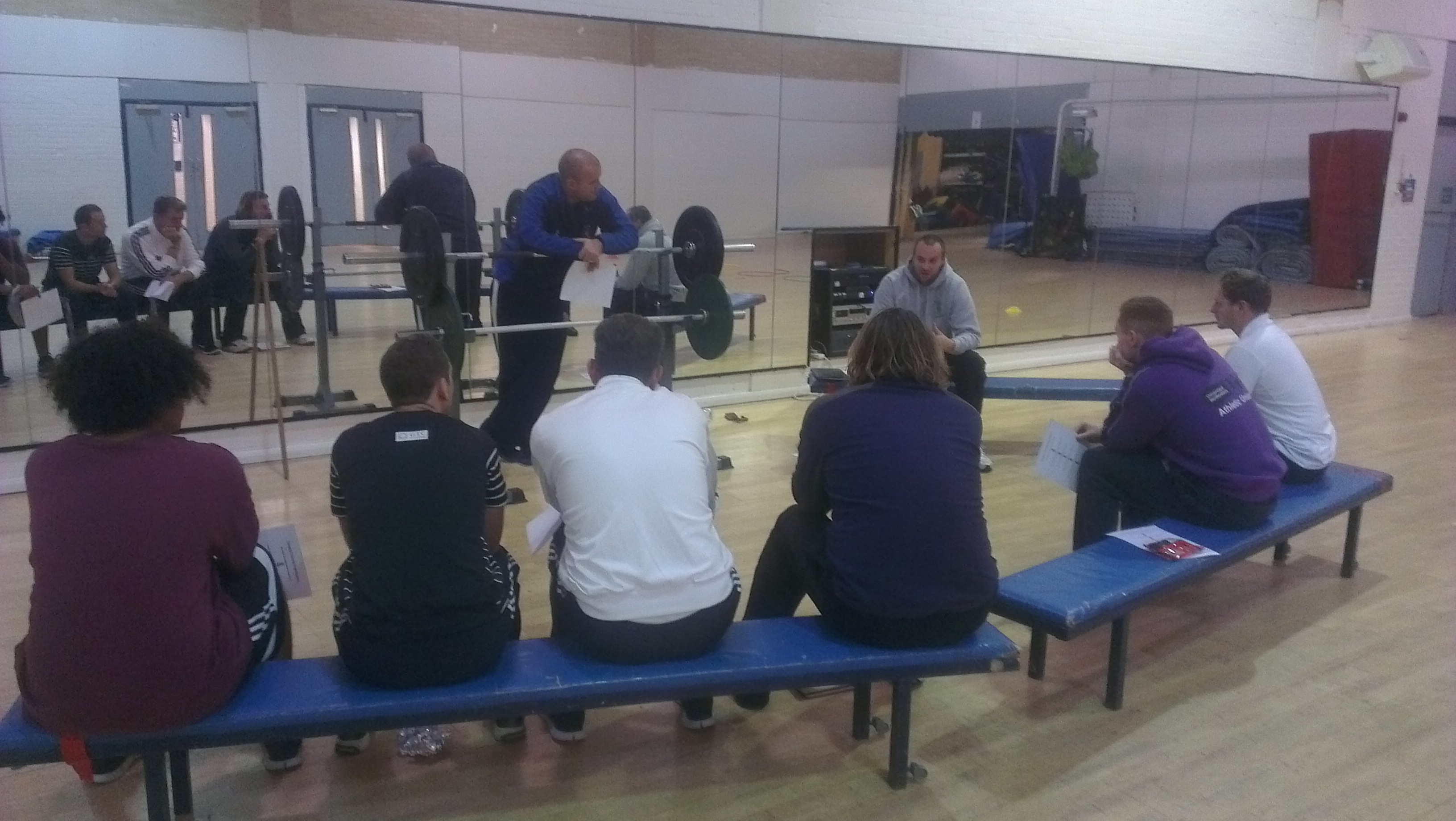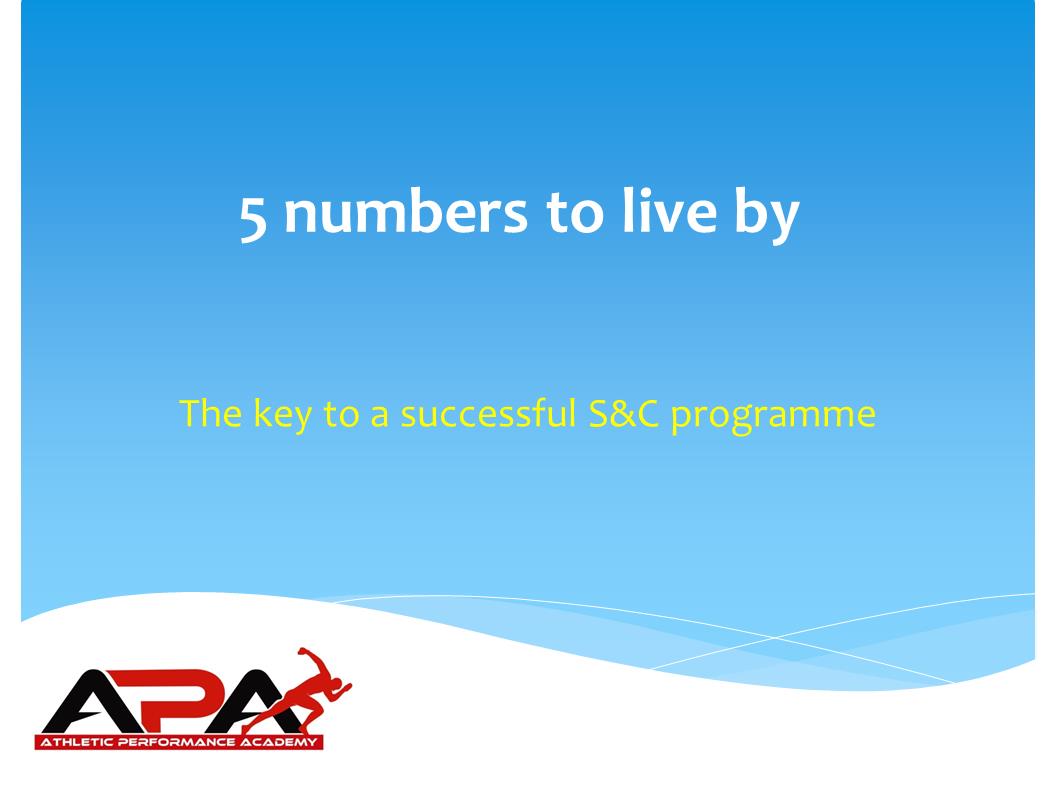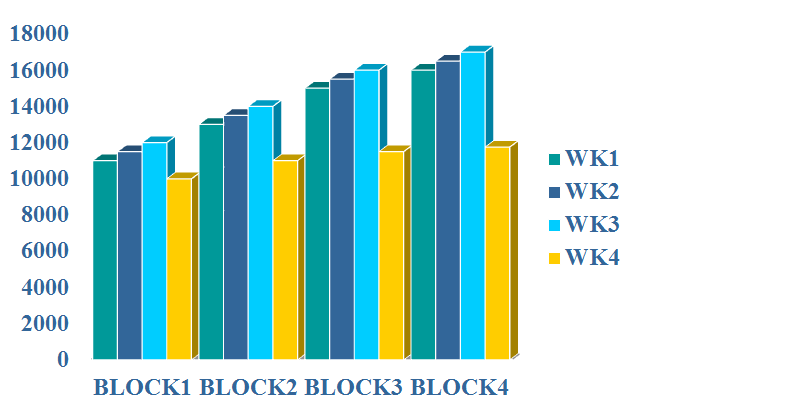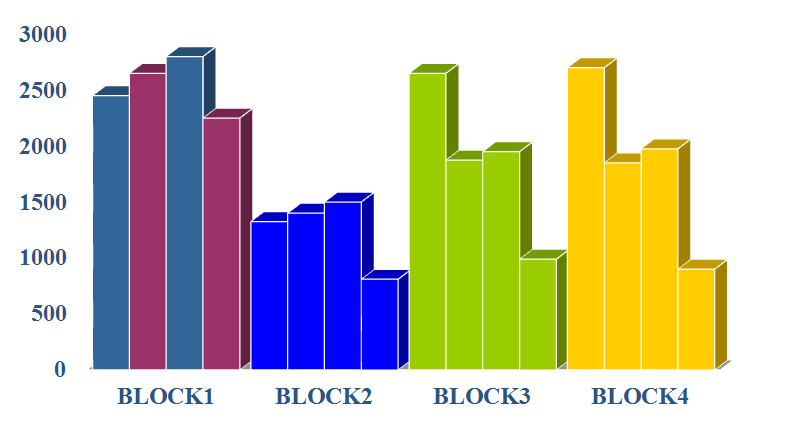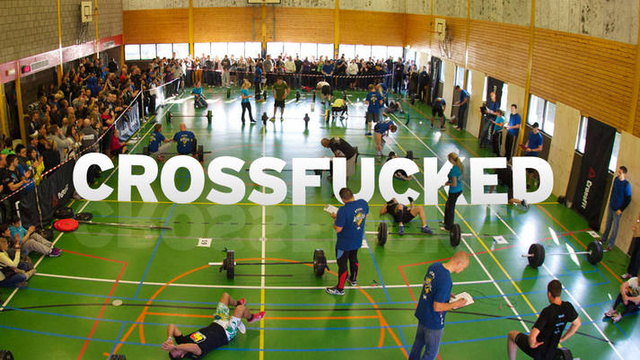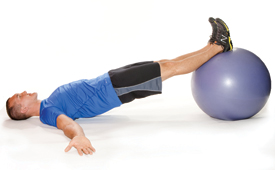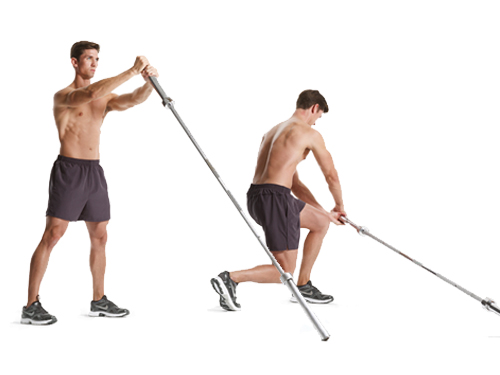THE IMPORTANCE OF RECOVERY
RECOVERY – THE SECRET TO SUCCESS
The stresses and strains of training hard are important to creating overload and adaptation in becoming a fitter, stronger and faster athlete. The approach to achieving gains is different in every sport and every person; however common themes and methods of training have been researched and shown to have significant effects. For example, heavy resistance training will increase an athletes’ strength, speed/sprint training will make an athlete faster, pushing yourself harder for longer will build stamina and engaging in activities such as yoga will increase suppleness. All of these aspects should be considered when designing training programs. However one area is often overshadowed when it comes to program design, recovery. Recovery can be defined as “regaining what was lost” or simply returning an athlete to a pre-training state of readiness (Stone, Stone, Sands, 2007).This is arguably one of the most important areas, as it is during the recovery from overloaded training that the athlete actually begins to change physiologically into a different beast. When putting together your athletes program, planned recovery is vital. How you want the athlete to be able to perform everyday can also be linked to the training goal – if gaining maximal strength is the goal, lots of recovery from high intensity but short duration exercise is needed, whereas if improving stamina in a games player such as tennis, where they are required to compete daily at high intensities for up to two weeks, recovery will not be 100% complete after everyday due to the volume of work they must endure, but should be factored into the overall program to allow varying intensities of training. In this article, I’ll examine the current research on different types of recovery strategy, give a few examples of what has worked in the past and put forward a plan that can be used to help you.
STRETCHING
Stretching has been the primary form of exercise used for recovery for the past 40 years. There has been lots of research into the effects of different types of stretching and the influences this has on muscle damage markers and perceived muscle soreness following various types of training. If recovery is the restoration of a state of readiness, then it is important that players also prepare themselves for physical training by conducting a warm up including dynamic stretching and a progressive ramp of intensity and game mimicking movements. Typically static stretching has been reserved for improving flexibility and recovery post-exercise. It is important that the muscles are in a warmed and pliable state so as to maximise the effect of elongating the muscle fibres. Therefore if performing a stand-alone stretch session a warm up should be conducted to enable the thermo-elastic properties of muscles to initiated. Static stretches should be held for approximately 30 seconds, this enables the Golgi tendon organs within the muscle fibres to relax and the (new, longer) muscle length to be maintained without muscle spindles firing to protect the body from the damage of overstretching. There are various types of stretching that can be utilised to increase flexibility;
Static: holding a stretch at a set length for 20-30 seconds, this can be done actively by the athlete or passively with assistance from either a partner or equipment.
Dynamic: movement based flexibility, where the muscles are progressively taken through an increased range of motion under a controlled tempo. The use of external equipment such as stretching beds, bands, Swiss balls can also assist in enhancing this form of stretching.
PNF: Proprioceptive-Neuromuscular-Facilitation is where the muscle is taken to a length of stretch and then the athlete pushes against the resistance of a partner or piece of equipment for ~6 seconds to initiate the activation of the Golgi tendon organs and cause autogenic inhibition (relaxation of the muscle after adjustment to the new length) before taking the muscle into a passive static stretch at a greater length. This process is repeated 3-5 times to increase the range of motion and is one of the more effective methods of stretching.
SMR: Self Myofascial Release, recent trends in the fitness industry have seen an increase in the usage of equipment such as foam rollers and trigger point release balls as a method of enhancing flexibility by breaking down tough fibrous fascia to increase the elasticity of the muscles and connective tissues. It is based around Myofascial meridians and lines of tension that run throughout the body, arguing that if one area of the body is ‘tight’ it could be due to compensation for a movement or muscle imbalance elsewhere in the body. For further reading on the area, I recommend ‘Anatomy Trains’ by T.W.Myers (2009).
Ballistic: not often used for increasing muscle length after training but can be utilised before. Ballistic stretching involves progressively taking a muscle through a greater range of motion in a fast moving dynamic action repeated several times with an increased stretch each time e.g. leg swings. This is not a form of stretching that I would recommend for post-exercise or increasing muscle length beyond a transient phase.
Something to consider about stretching that is often overlooked is to utilise the full range and angles available to stretch at a given joint. Often just the main muscle fibres are focussed on and stretching of peripheral fibres, lateral, medial, superior or inferior to belly of the main muscle can require changed angles, amounts of tension and length of stretch. A great follow up read on stretching can be found in ‘Stretch to Win’ by A. And C. Frederick (2006).
WATER IMMERSION: HOT, COLD AND CONTRAST BATHING
Immersion in water has been used as a relaxation and recovery method for thousands of years. How many times have you heard someone say they had a nice hot bath and now feel relaxed? Regardless of the temperature, water causes hydrostatic pressure to act on the bodies’ fluids in the immersed regions. The removal of swelling or oedema and post exercise metabolites such as lactic acid from peripheral areas will assist in the recovery process.
In more recent times cold water has been used in recovery processes’ also. Cold water causes shunting of the peripheral blood towards the thoracic region. Superficial blood is also redirected into deeper tissue to maintain body temperature, as the process of homeostasis and auto-regulation takes full swing. From personal experience of having ice baths or cold water baths, you certainly feel the thermogenic effects of the transfer of blood. I have always found cold water baths helpful in my recovery process, although I mainly only used them when I return from training with a significantly elevated body temperature or I have trained in hot conditions. The cooling effect lasts for up to 2 hours, by which time I will have had the chance to eat, stretch and rest and return to a pre-exhausted state.
Hot water immersion causes vasodilation and increased circulation. Blood moves superficially in order to maintain core temperature and also increases the supply of oxygen to clear post exercise metabolites in the skeletal musculature. Hot or warm water immersion is typically the common practice of most exercising individuals, if not simple for the fact that we prefer warm water to cold, however the increased circulation in the peripheral muscles after exercise may not be the best solution to recovering from intense training. Overheating of the muscles can cause post-exercise metabolites to pool or remain in the muscles and can lead to cramps or an increased amount of time to return to pre-exercise state. The use of alternate hot and cold water immersion can therefore be of benefit via the alternation of these physiological states, this is known as a flushing effect or contrast bathing.
The use of contrast bathing has been associated with decreases in muscle damage markers (creatine kinase) and perceived muscle soreness post-exercise as well as the removal of blood lactate and other metabolites post-exercise. However this does not guarantee complete recovery post-exercise and repeated performance within a few hours can be sub-optimal. This brings us back to the question of what you are recovering from and how long you have in order to return to a pre-fatigued state.
Recent research has made the following suggestions towards application of hot and cold immersion;
- Cold water immersion is generally between 8-15°C.
- Hot water immersion is generally between 38-42°C.
- The ratio of hot: cold immersion is commonly controlled at 2:1, with no significant changes in perceived soreness following 1 minute immersions, but positive outcomes when using 2 minute plus immersions. Recommendations would be to do 2-3 minute cycles between hot and cold immersion.
- The overall time frame for immersion has been experimented with; 15 minute protocols have elicited greater physiological responses than shorter protocols of 3-5 minutes. Based on this recommendations would be to complete 12-20 minutes on contrast bathing dependent upon immersion times and number of cycles.
Importantly though if water temperatures are not controlled the effects of contrast bathing are significantly reduced, if at all present.
NUTRITION
Possibly the most important area to have corrected in order to speed up recovery. Just like running a Formula 1 car on high octane fuel, athletes too need to replace the correct amounts and types of fuel in their bodies in order to repeat high intensity performances. I could write a whole other blog about nutrition for athletic performance and no doubt will in the future, however the key principles needed when talking about nutrition for recovery are proteins and carbohydrates. Proteins repair the damage done to muscle cells by free radicals released during high intensity training and carbohydrates replace the muscle and liver glycogen stores (energy tanks) within the body in order to continue functioning at high intensities. Carbohydrates also help with the co-ingestion of protein and increase absorption levels when combined. Optimal ratios depend upon the type of exercise / sport and the duration and intensity. Endurance athletes such as marathon runners, tri-athletes and swimmers should use a recovery ratio of 4:1 CHO:PRO, whilst intermittent sports players could use a ratio closer to 2:1. Refuelling of nutrients should occur within 2 hours post-exercise, ideally around 30 minutes after completion, to enable blood to begin flowing around the digestive organs again after exercise induced shunting. The quantities that you should consume are also important during this ‘open window’ of time after training. Dependent upon your sport and the type of training you have just completed – strength and endurance training needs would differ significantly – however not much more than 40g of protein can be digested in any single serving, protein above this value is likely to not be processed and simply be excreted. Often supplement companies will sell their product based around you receiving a massive dose of protein – often far greater than can be digested – in order to gain size, mass, strength or perform longer. I my opinion this is marketing in order for you to buy more of their product. Typically 20-40g per serving or meal is sufficient for protein. If the ratios mentioned previously are to be followed this would leave approximately 80-160g of CHO for endurance athletes and 40-80g of CHO for sports players. Recovery drinks are useful for gaining these needed macronutrients quickly and in an easily digestible form.
Hydration is also vital to recovery. As little as 2% dehydration can result in decreased performance and often several litres or kilograms of fluids can be sweated out during exercise. Recommendations are to consume 1.5x the amount of fluids lost during exercise. You can calculate how much fluid you have lost by weighing yourself pre and post-exercise. If possible you should also aim to replace the electrolytes lost from sweating, notably sodium, potassium and magnesium, these can be obtained through eating fruits, vegetables and nuts or via an electrolyte supplement such as ‘EleteWater’.
MASSAGE
Massage is the ‘ultimate’ recovery method. It combines the movement or superficial blood back towards the organs for clearance of post-exercise metabolites and deoxygenated blood. It can lengthen the fascia, connective tissue, myofibrils and muscle fibres to an improved state of readiness. It can be used to release muscle tension and knots and it is also relaxing and therapeutic if performed correctly. However it is possible to have a bad massage and this can have a negative effect of recovery. The type, duration and area massaged has to be correct in order for the athlete to enhance recovery. This is why working in a multi-disciplinary team and utilising expert advice where possible creates a best practice scenario. Massage is also expensive and time consuming as it requires another person to perform, so may not be the ideal scenario.
The use of some of the above techniques can be just as productive towards enhanced recovery and importantly can be conducted individually and easily. For example when away in another country alone, a player can utilise bands, balls and rollers along with good nutrition and contrast bathing to facilitate an equal effect.
Recovery for repeated performances is vital to success at the highest levels. There are many inexpensive and convenient methods available to the exercising athlete and most simply require, forethought and planning. Ultimately looking after your body as an athlete is your primary job, finding your own individual recovery strategy that works for you can help you win more and achieve greater success.
Thank you for reading, be sure to check out the website and twitter feed for updates on current training and further articles.
Fabrizio Gargiulo
Suggested Reading
‘Anatomy Trains’, Myofascial Meridians for Manual and Movement Therapists. Thomas Myers, (2009).
‘Stretch to Win’ A. And C. Frederick (2006).
Becoming a Supple Leopard: The Ultimate Guide to Resolving Pain, Preventing Injury, and Optimizing Athletic Performance. Kelly Starrett (2013).
Reference list
Cochrane, D. (2004). Alternating hot and cold water immersion for athlete recovery: A review. Physical Therapy in Sport, 5: 26-32.
Gill, N., Beaven, C. and Cook, C. (2006). Effectiveness of post match recovery strategies in rugby players. British Journal of Sports Medicine 40: 260-263.
Haddad, H., Laursen, P., Chollet, D., Lemaitre, F., Ahmeidi, S. and Bucheit, M. (2010). Effect of cold or thermoneutral water immersion on post exercise heart rate recovery and heart rate variability indices. Autonomic Neuroscience, 156 (1): 111-116.
Hamlin, M. (2007). The effect of contrast temperature water therapy on repeated sprint performance. Journal of Science and Medicine in Sport, 10: 398-402.
Lateef, F. (2010). Post exercise ice water immersion: is it a form of active recovery? Journal of Emergencies, trauma and shock, 3(3): 303.
Pugh, L., Edholm, R. and Fox, R. (1960). A physiological study of channel swimming. Clinical Science, 19: 257-273.
Vaile J, Blazevich AJ, Gill N. (2007). The effect of contrast water therapy on symptoms of delayed onset muscle soreness. Journal of Strength and Conditioning Research 21: 697-702
Vaile, J., Halson, S., Gill, N. and Dawson, B. (2008). Effect of hydrotherapy on the signs and symptoms of delayed onset muscle soreness. European Journal of Applied Physiology, 102 (4): 447-455.
Wilcock, M., Cronin, J. and Hing, W. (2006). Physiological response to water immersion: a method for sport recovery? Sports Medicine, 36: 747-765.
Zuluaga, M., Briggs, C., Carlisle, J., McDonald, V., McMeeken, J., Nickson, W., Oddy, P. and Wilson, D. (1995). Sports Physiotherapy: Applied Science and Practice. Churchill-Livingstone, Melbourne.





